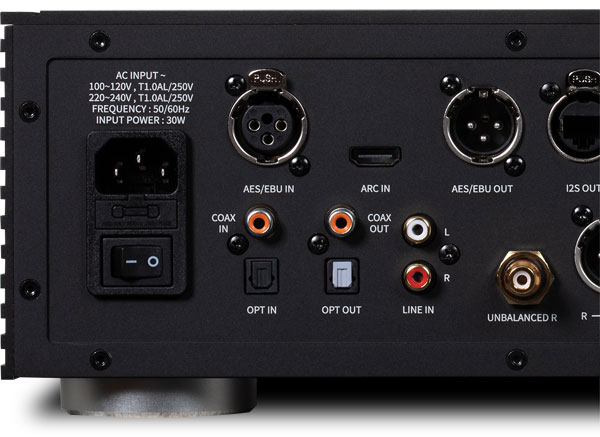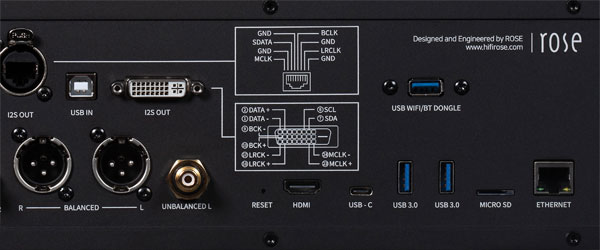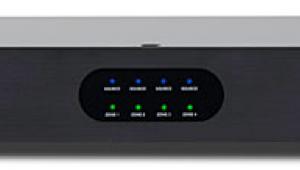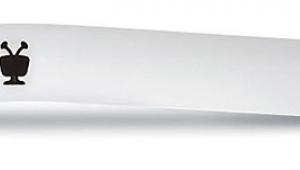You can stream everything in very good audio quality for so much less that I do not get where these units are so expensive. Must be for a much larger profit margin and a slightly better build. Not really worth that. My pick is the Cocktail Audio N25 which in The US is largely ignored.
HiFi Rose RS150 Streaming DAC Review

AT A GLANCE
Plus
Outstanding performance and build quality
Stunning 14.9-inch high-def color touchscreen
Highly customizable operation
HDMI ports for connecting to a TV
Minus
Lacks headphone output, phono input, and room EQ
THE VERDICT
Gorgeous design, audiophile-grade sound, an alluring touchscreen, and 4K video output make the HiFi Rose RS150 a high-value item despite its premium price.
My listening room has seen components from three different South Korean audio manufacturers over the past year, and in each case the performance, build quality, and aesthetics of the product have been uniformly superb. But what really impressed me about them is the extent to which each used software and/or circuitry developed in-house rather than purchased off-the-shelf. Call me slow, but I think something special is going on south of the 38th parallel.
The recent arrival of the RS150 ($4,995) a reference network player from HiFi Rose, brought the number of South Korean manufacturers represented in my listening room to four. HiFi Rose is a division of Citech, a 50-year-old, Seoul-based consumer electronics manufacturer. A slick example to today's envelope-pushing music playback gear, the RS150 packs a streamer, a digital-to analog-converter (DAC), and a digital preamplifier, all managed by the Android-based Rose OS operating system. Given my experience with gear made by Korean audio companies, I suspected that the RS150 might contain more than a few proprietary components. When I learned that the company has nearly 25 engineers on staff, I became fairly sure of it.
Features
Positioned above the RS250 ($2,495), the RS150 is HiFi Rose's flagship streaming DAC. The company makes four additional RS or "Rose Streamer" players, including some that contain an internal amplifier. Finally, there's the RSA780E, a $449 CD drive that links via USB to the company's streamers and lets you play CDs or rip discs from your collection for storage on connected drives.
Any discussion of the RS150 should start with the elephant in the room: the streamer's oversize high-definition full-color LCD touchscreen. Measuring 14.9 inches diagonal and taking up most of the unit's front, it displays not just menus, album cover art, and track information, but cool stuff such as videos, graphic VU meters in a choice of styles and colors, analog and digital clockfaces (each with weather information), and an old-school-style stereo receiver interface complete with a digital tuner flywheel and the sound of static in-between stations.
The touchscreen may serve as the RS150's face, but its brain is a Hexa central processing unit (CPU) supported by Dual-core Cortex-A72 and Quad-core Cortex-A53 processors operating at speeds of up to 1.8GHz and 1.4GHz, respectively. This is greater processing power than you will find in many other streaming DACs.
Digital audio signal conversion within the RS150 is handled via ESS Technology's flagship Sabre ES9038PRO chipset, which supports playback of PCM and DSD signals of up to 32-bit/768kHz and DSD512 (22.5792Mhz), respectively. The chipset's output is timed by a low-jitter Femto clock. PCM signals can be upsampled to 24-bit/192kHz, and there are seven digital filter options (e.g., Brick Wall, Apodizing Fast Roll-off, and Minimum Phase Fast and Slow Roll-off) plus full decoding of MQA (Master Quality Authenticated) files. Although the RS150 only outputs stereo, multi-channel audio can be passed through to a surround sound processor or receiver via its digital outputs. Upon install of the VLC media player to the RS150 (from the Rose Store online app store), incoming multichannel Dolby and DTS signals can also be downmixed for two-channel output.

The RS150 has no dedicated video inputs, but it can output video, album art, and track information in resolutions up to 4K/60Hz to a TV or projector via its HDMI 2.0 port. Video content can be sourced from files on local storage devices or streamed internally by the RS150. (High dynamic range video formats are not supported.)
The RS150's digital preamplifier features a defeatable, 100-step volume control, permitting a line-level connection to an external amplifier or set of powered speakers. Power is provided courtesy of a custom-made, low-noise toroidal transformer, a type that typically provides superior performance compared with the inexpensive square EI lamination devices used in many audio components.
The RS150 can be controlled directly via its touchscreen or with the RoseConnect app, which is supported on both iOS and Android devices, as well as PCs. App control functions let you turn the RS150 on and off, activate and deactivate specific inputs, and change front-panel display settings. When the outputs are in the variable setting, volume can also be adjusted using the app.
Other functions let the RS150 stream audio and video directly from Tidal, Spotify, Qobuz, and YouTube, the latter commercial-free. Proprietary HiFi Rose content can also be accessed through the app. RoseTube, for example, provides a large selection of classical and popular music videos. Rose Radio provides over 990 radio stations worldwide. And Rose Podcast delivers an almost endless assortment of podcasts through Apple iTunes.
If streaming services aren't your bag, the RS150 can play locally stored audio and HD video files contained on hard disc (up to ten terabytes) and solid-state drives (up to four terabytes), MicroSD cards (up to 400GB), and network-attached storage (no stated limit). You can also play or rip CDs using the HiFi Rose RSA780 mentioned above or tap the RS150's digital and analog inputs to connect a CD player or transport. Connectivity options on the wireless front include Apple AirPlay, Bluetooth, and Wi-Fi. The RS150 also supports network streaming via UPnP/DLNA and is Roon Ready.
Available in silver or black, the RS150 features extremely thick chassis panels machined from a solid block of 6063-T5 "architectural aluminum" and integrated into a single piece, which is said to maximize thermal efficiency and dampen vibrations. The top panel is beautifully engraved with the "Rose" name and logo, while the bottom panel contains a handy solid-state drive bay. Front-panel capacitive touch control buttons are provided for power on/off, volume control, and mute.


Rear panel inputs include analog stereo RCA and AES/EBU, optical, and coaxial digital. There's also an HDMI ARC port for audio input from a connected TV, and USB type-B for a computer hookup. Both RCA and XLR analog stereo pre-amp outputs are provided, along with AES/EBU, I2S, optical, and coaxial digital outputs for connecting to an external DAC. Finally, there's a second HDMI 2.0 port for video output, along with a pair of USB type-A ports for a CD-ROM drive or USB storage, a Wi-Fi/Bluetooth dongle connector, a microSD card slot, and a LAN (Ethernet) port.
Proprietary HiFi Rose components include the unit's fully differentially balanced analog output stage, power supply, and Rose software (e.g., the Rose OS and the Rose apps). This made in-house approach permits extensive customization, with the user able to adjust output levels up to 2.2 volts RMS for the RCA jacks and 6 volts RMS for the balanced XLR connections when linking the RS150 directly to a power amplifier and controlling its volume. DSD signal gain can be adjusted to match that of PCM signals, and the same applies to the I2S output for matching the input of an external DAC.
- Log in or register to post comments

As an Android-based device, isn't this limited by Android's audio limitations, such as all 44.1 kHz material being resampled to 48 kHz?
As someone who doesn't at all get the use case for one of these boxes, I'll (mostly) avoid commenting on the perceived value of $5k for something like this. Eesh.

My top pick is the Cocktail Audio N25. The playback of PCM and DSD signals of up to 32-bit/768kHz and DSD512 (22.5792Mhz), respectively, is supported by the RS150 thanks to ESS Technology's flagship Sabre ES9038PRO funny shooter 2 chipset, which is responsible for handling digital audio signal conversion within the RS150.

Overall, the HiFi Rose RS150 Streaming DAC is a top-performing audio device that delivers exceptional sound quality and versatility. Its high-resolution audio playback capabilities, convenient connectivity options, and sleek design make it a great option for audiophiles looking for a premium streaming DAC. However, it may be a bit pricey for budget-conscious consumers, and some users may find the touchscreen display to be too small for their liking. Nevertheless, if sound quality and performance are a top priority, the RS150 is definitely worth considering. So, if you're looking for a high-end streaming DAC that delivers audiophile-grade sound quality, the HiFi Rose RS150 is a solid choice. Overall, it is a worthy investment for serious audiophiles who demand the best in audio performance. With its high-resolution audio playback capabilities, versatile connectivity options, and sleek design, the RS150 is sure to impress even the most discerning audio enthusiasts. So, if you're looking for a top-performing streaming DAC that delivers uncompromising sound quality, the HiFi Rose RS150 is definitely worth considering. Whether drywall contractors near me detroit listening to your favorite music through headphones or a high-end audio system, the RS150 is sure to elevate your listening experience to new heights. So, if you're serious about audio quality and want a premium streaming DAC that delivers exceptional performance, the HiFi Rose RS150 is a top contender

This is kinda expensive, I'm sure that you can find many devices like this one for at least half the price and about the same quality, I don't really get why someone would buy this one. I think that someone in my personal Highest Rated Heat Pump Replacement in Gainesville, Florida has a Toshiba device like this one and it honestly sounds really good!
































































